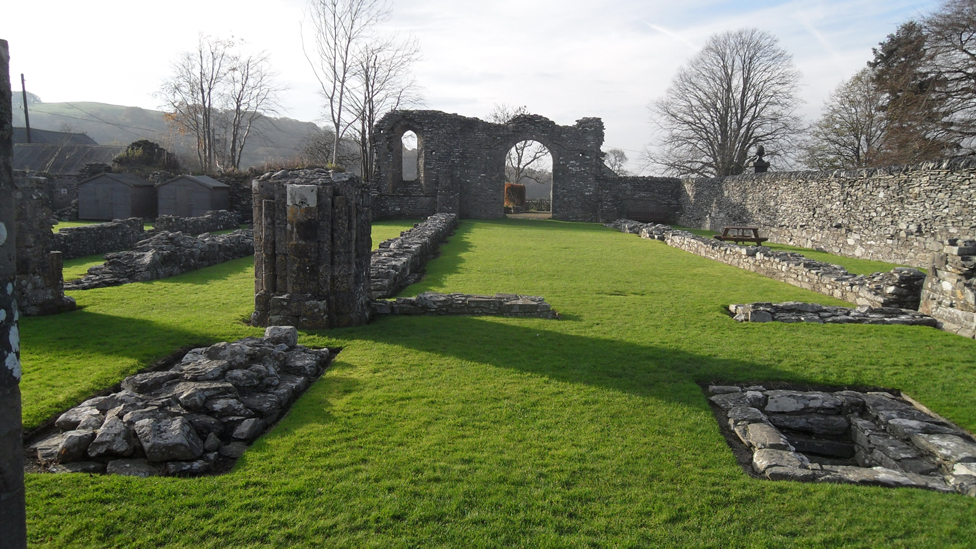INTRODUCTION
Regular readers will know that one of the ‘staples’ of this blog is the wasting of public funding by Third Sector organisations. Exposing this waste is not something I really enjoy but it’s so prevalent in Wales – and has become worse with devolution – that it just cannot be ignored.
In a very general sense it’s possible to divide most Third Sector organisations into two main groups.
The first is the local group set up to ‘regenerate’ a run-down area, with most of those involved being local people, and a surprisingly high percentage of them having connections with the Labour Party. I say ‘surprisingly high percentage’ because, while less than a third of Welsh voters may now support Labour, the party’s supporters seem to make up a clear majority in this category. Let’s call this the Community sector.
The second is not so easy to categorise. Perhaps the best way to put it is that this group is about things rather than people or a community, perhaps an old building, or a specific area of countryside. Those involved in bodies like this are unlikely to be local. Let’s call this the Conservation sector.
Despite this helpful distinction, there are of course overlaps. But it tends to be one way, with outsiders involved in, often leading, Community groups rather than finding many locals in Conservation projects.
I’ve given you this introduction because it might help with what follows. This post being about two stories breaking that involve one group from each category.
♦
NSA AFAN
As the name suggests, NSA Afan is based in Port Talbot, and its website tells us, “The purpose of the organisation is to support regeneration to enable a better quality of life for people living in the most disadvantaged communities in the Swansea Bay Area.” (I am grateful to the ever-alert ‘Stan’ of Neath Ferret fame for tipping me off about this story.)
The original media mention on the ninth of this month said that police are investigating the possible misuse of public funds, and tells us, ‘A Welsh Government spokeswoman said: “Following initial investigations into allegations concerning possible misuse of public funds at NSA Afan, we have suspended funding while further investigations are undertaken.”‘
UPDATE 23.01.2017: Funding has now been stopped completely.
The second report, two days later, says, quoting a police source, “We can confirm that South Wales Police has arrested a 35-year-old woman from the Port Talbot area on suspicion of theft on August 11, 2016 following a complaint received from NSA Afan.’
Now in cases like this I make my way to the figures, and so here are the most recent accounts for NSA Afan, these being for year ending 31.03.2016. A quick perusal of the nitty-gritty will tell you that income is falling, dramatically, down from £2,005,262 in 2014 to £1,428,901 in 2015 and £923,210 in 2016.
Even so, you’ll be pleased to know that despite this drop in funding staff costs at NSA Afan for 2016 were still over £800,000. Which means that in 2016 income just about covered staff costs.
‘Ah, Jac, you cynical bastard’ I can hear in the background, ‘that still still leaves a hundred grand to help people, at the Dalton Road Community Employment Academy and the Glyncorrwg Con Club’. Maybe, maybe not.
My equivocation is due to the fact that if we go to the Companies House website, there we find more information on (to give it its full name) the New Sandfields Aberafan and Afan – Community Regeneration, Company Number 03674953. Click on the ‘Charges’ tab and you’ll see that there are nine outstanding Charges against NSA Afan, that is loans or mortgages. Put it all together, the falling income, the high staff costs, payments on loans and mortgages, and it becomes clear that NSA Afan is not in the best of financial health.
In fact, the independent auditors say as much in the Accounts for 2016 (page 21, para 3), where we are warned of ” . . . material uncertainties which may cast doubt about the Charities (sic) ability to continue as a going concern.”
The more generous among you may think that the theft currently being investigated by South Wales Police plays a major role in NSA Afan’s parlous state. Not so. For elsewhere in the Accounts (page 20, para 9) we are told that “£50,000 was refunded by the credit card company during the year, however the remainder of the theft is unlikely to be recovered”.
The “remainder” may be the £46,144 we find on page 28, under ‘Donations and Legacies’. If so, how do we reconcile this amount with the statement quoted in the previous paragraph? Or is the £46,144 part of the £50,000 refunded by “the credit card company”?
Despite the falling income NSA Afan is still expanding. Curious, really, considering it’s a Communities First project and that last October even the ‘Welsh’ Government was forced to admit that Communities First had been a very expensive failure. Among NSA Afan’s recent acquisitions was Youth of Bettws (YOBS). So I made some enquiries.
What I’d assumed to be just a youth club is in fact registered with Companies House, Number 06719083. Under the Charges tab we learn that YOBS has an outstanding loan of £267,350 with the Big Lottery Fund, a loan it took out on June 29th 2011 to buy the leasehold of a former school owned by Bridgend County Borough Council.
The same property is now listed as a Charge against FSA Afan, but the details have changed. On May 27th last year The Big Lottery Fund made a ‘grant’ to NSA Afan of £388,384. This was presumably done to take over the leasehold of the property inherited from Youth of Bettws aka Bettws Boys and Girls Club, but what was the extra £121,034 for?
A question worth asking seeing as the Land Registry document tells us (page 3) that “The value as at 15 August 2016 was stated to be under £100,000”. Maybe NSA Afan is using some of the money it got from The Big Lottery Fund for some other purpose? Apparently not; because the Charge document mentions only the Bettws Boys and Girls Club. (In case you’re wondering, this is a repayable grant, what you and I would call a loan.)
To recap: we have a property, Bettws Boys and Girls Club, owned by a Labour-run council and valued – or possibly the leasehold is valued – at “under £100,000”; but a Labour-controlled, Communities First body goes out on a limb for £388,384 to lease this property! Unless NSA Afan has massive plans for YOBS I do not understand what the hell is going on here. All I see is the regular pattern of public money being shuffled around between Labour-controlled bodies to create the illusion of employment and economic activity.
And what of the Big Lottery Fund? I’m sure most of you think of the BLF as a generous body gifting large sums of money to worthy causes, money we have given to this organisation through playing the National Lottery or its other games. Did you know that the Big Lottery Fund is a commercial lender?
Perhaps lending to groups that might have difficulty getting a loan from a regular financial institution – those it describes as “community and voluntary groups”? I wonder what the interest rates are? And if those groups receiving a loan default, does the BLF take possession?
To conclude. The Communities First scheme operated in the most disadvantaged areas of Wales, in other words, areas controlled by ‘Welsh’ Labour. This gave the party a golden opportunity to engage in cronyism. Which is exactly what it did, and this explains why the Communities First project was such a disaster.
Dealing specifically with NSA Afan, I don’t doubt that someone stole money, but this is not why it’s folding. It’s folding because it was badly run. Even when it was half-way up Shit Creek with income falling it was still taking on new liabilities!

As for the alleged theft, how was an individual employed by a body reliant on the public purse able to steal over £50,000 through a credit card? Was there no credit limit on this card? I do hope that the prosecution of this individual is not allowed to distract from the bigger problems at NSA Afan, all of which can be traced back to ‘Welsh’ Labour and the cronyism and nepotism on which it relies.
This system is now so discredited that it places ‘Welsh’ Labour at something of a crossroads. The party can either clean up the Third Sector and perhaps alienate many of those who benefit from it, or else it can stick with this system of corruption and see its electoral support slip even further.
♦
If NSA Afan is – was? – a Community type of Third Sector organisation, this next case is most definitely about a Conservation body . . .
CAMBRIAN HERITAGE REGENERATION TRUST
This outfit has starred more than once on this blog, but before looking at previous posts let’s get the background on the Cambrian Heritage Regeneration Trust Ltd (CHRT). It was Incorporated with Companies House on February 28th 2003 as Ymddiriedolaeth Atgyfnerthu Treftadaeth Sir Gar (Carmarthenshire Heritage and Regeneration Trust) and appears to have been a joint venture between the County Council and Coleg y Drindod.
Lord Dynevor came on board on April 9th 2003. A few other local worthies joined on the same day, including a Meryl Gravell, described as “Leader of Carmarthenshire County Council”. Another was Roger (now Sir Roger) Jones, then of the Welsh Development Agency, and a former BBC Wales Governor. While yet another director was William Powell Wilkins, who came up with the idea of the National Botanic Garden. Quite a crew.
Though for the purposes of this article I suppose the most important recruit was Claire Deacon, who became a Director on October 8th 2008. At the time, Ms Deacon, based in Marloes, Pembrokeshire, was working as a lecturer and also as a consultant (possibly to the Pembrokeshire Coast National Park). Ms Deacon served as a director until June 9th 2010.
The reason for Ms Deacon resigning as a Director was to take over as CEO, soon after the Trust bought its main project, Llanelly House in Llanelli. Though she rejoined the Board on June 1st 2011 as Secretary.

The name of the body was officially changed, with Companies House, from Ymddiriedolaeth Atgyfnerthu Treftadaeth Sir Gar to Cambrian Heritage Regeneration Trust Ltd on February 25th 2015. (All the information here, and more, can be found under Cambrian Heritage Regeneration Trust Ltd on the Companies House website.)
In addition to the main company, there is also the charity of the same name, and down the years there have been a few of what I can best describe as subsidiary companies. The only one I think is worth bothering with is Plas Llanelly House Cyf, where we again find Ms Deacon as Secretary.
Previous posts told how the CHRT is branching out, first to Merthyr, with the purchase of the YMCA building in Pontmorlais, and then in the other direction, down to the ruins of Ystrad Fflur (Strata Florida Abbey) with the purchase of the farm buildings at Mynachlog Fawr. So you may wish to read Ystrad Fflur – The Heritage Industry Moves On and Conserving Heritage, Maintaining Colonialism, both by a guest writer.
The reason for CHRT branching out from Llanelly House was quite simple – the funding was running out, and there was no way that Llanelly House could ever pay its way – and Ms Deacon’s salary – unless a fairy godmother stepped in with oodles of loot.
The time had come to find another project, concoct another ludicrously optimistic business plan, rake in the grants, live high on the hog for a few years, get plenty of good publicity, improve the CV . . . until it becomes clear that this is yet another project that will never survive without the drip-feed of public funding. By which time people like Ms Deacon have usually moved on to the next project. And so it continues. This is the Conservation element of the Third Sector in Wales, and the beneficiaries are almost always, like Ms Deacon, from over the border.
Which brings me to the reason for writing this piece. The word on Stepney Street is that Ms Deacon recently parted company with the CHRT. And when you read the latest accounts you’ll understand why. The auditors state quite clearly (page 11, para 1) that the net deficit at 31.03.2016 of £114,038 “. . . may cast significant doubt about the Charity’s ability to continue as a going concern.”
A number of entries in the Accounts caught my eye, and if I was involved in CHRT or Llanelly House I’d be asking questions about them. The first is to be found on page 18 in ‘Direct Costs of Charitable Activities’, where we are told that in the year that ended 31.03.2016 £262,482 was spent on “Legal and Professional Fees” (£168,146 the previous year). That figure seems very high, and I’d like to have it explained.
Another perplexing entry, on page 26, tells us that . . .
How does the CEO get taken on as a consultant? CEO Claire: ‘Oh, hello, Claire, this Claire here, would you like to work for a while as a consultant, for a much higher rate than your CEO salary?’ Consultant Claire: ‘Well, thank you, Claire, I’d love to‘. This is bizarre, but I’ve reported on it before, so it’s not new to me.
As if the figures for CHRT weren’t bad enough the Plas Llanelly House Cyf Accounts tell us that that venture is sixty-five grand down the Swanee. But perhaps worst of all is that – just as with NSA Afan – in addition to falling income and rising debt there are Charges against CHRT, held by Finance Wales, the National Heritage Memorial Fund, the Architectural Heritage Fund, and Merthyr Tydfil County Borough Council. If the Trust can’t meet its obligations then presumably each of these Charges will become the responsibility of its guarantor, be that the ‘Welsh’ Government, Llanelli town council, or Carmarthenshire county council.
In case the escape plan in the forms of Merthyr YMCA and Ystrad Fflur don’t work out, Ms Deacon has now gone into business on her own account, with Marloes Conservation Ltd. This company was only Incorporated on December 1st (soon after the latest Accounts were published), which lends credence to the suggestion that she is no longer with CHRT. Perhaps she’s had a vision – Meryl Gravell leading the band into Abide With Me as the good ship Llanelly House heaves her last and slips into the abyss.
It will be interesting to see what work comes the way of Marloes Conservation Ltd. And where from.
♦
Although very different in their fields of operation, and those involved, NSA Afan and CHRT have a lot in common.
To begin with, both have swallowed up large amounts of public funding. And now, with both projects in serious financial difficulties, it becomes clear that much of that public funding has been wasted. Which is not to say that some people haven’t benefited from NSA Afan’s courses, or that good work hasn’t been done at Llanelly House, but the issue is surely priorities.
With an economy in serious trouble, with EU funding bound to end soon, how do you feel about paying for classes on ‘The American Century’ in Port Talbot, and a new rococo balustrade for Llanelly House, when sick people have to spend hours on a trolley in our hospitals?
Obviously that money would be better spent on the hospitals, and on training doctors, nurses and other staff we need.
Another troubling issue with these and other projects is the ease with which they secure Lottery funding. In the case of NSA Afan it’s Big Lottery Fund, and with CHRT it’s Heritage Lottery Fund, but it’s still money we’ve given. It’s almost as if Lottery funders take their cue from the ‘Welsh’ Government. Is there a connection?
In a poor country like Wales, what funding we have must, in the first instance, be spent on what we need, and in the longer term there must be investment in making Wales wealthier, not in glossing over the deprivation with publicly-funded Labour cronyism, or by restoring Georgian mansions into which our ancestors would only have been allowed as servants.
It’s long past the time when the ‘Welsh’ Government and the civil servants it claims to control did what other governments across the globe do – prioritise, and stop wasting money we can’t afford to lose.
♦ end ♦











